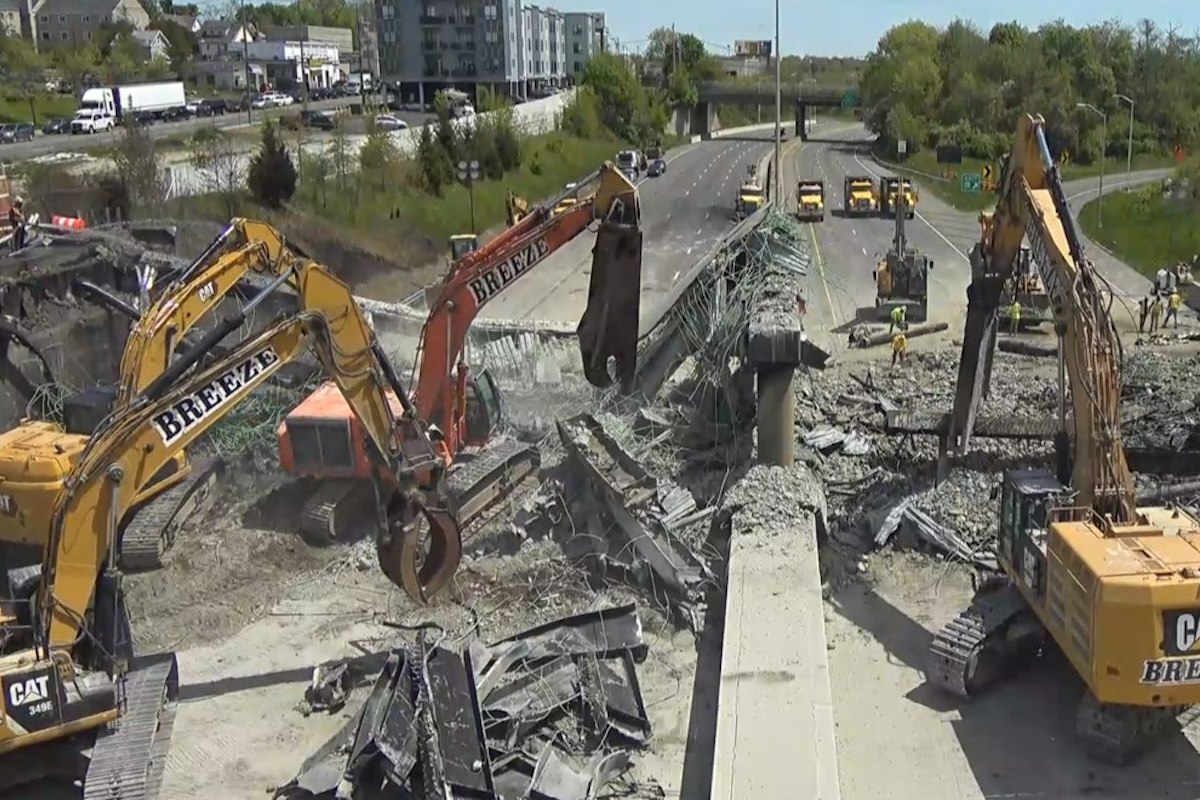Let’s take a look at how this technology is already being used in construction and adjacent fields, what may come next and what it means for access equipment like mobile elevating work platforms (MEWPs) and telehandlers.
Until the 1970s, most factory production work was performed by manual labor. During this decade, many manufacturers adopted robots for welding applications that required a high degree of precision. In part, they also adopted these automated solutions to compensate for a shortage of skilled labor. During this factory floor revolution, the role of human workers evolved to focus on oversight and inspection.
Today’s robots are more flexible, which means they can be reprogrammed to handle a variety of tasks. The role of human workers has continued to evolve as a result, designing workflows and programming robots to perform increasingly sophisticated tasks. Robots have become so powerful and flexible that they’re starting to move outside of factories into an array of in-the-field applications where they show similar promise.
At the same time, job site safety remains an ongoing focal area for equipment owners, especially in applications where employees must work at height or perform heavy, repetitive tasks. Advances in technology now make it possible for workers to control or monitor a machine at a safe distance on an autonomous or semi-autonomous basis.

| Your local Trimble Construction Division dealer |
|---|
| SITECH Northeast |
A final driver of robotics in construction is the constant need to improve productivity, streamline repetitive processes and reduce operating costs. Robotic technology can handle repetitive tasks faster and at a more consistent level of quality.
Across the construction industry, advances such as self-driving machines, auto-compensation for load dynamics and automated site grading couldn’t even be imagined a generation ago. But they’re becoming more common today. Inevitably, robotics will play a role in the design and applications of MEWPs and telehandlers in the years ahead.
One industry that is consistently five to 10 years ahead of the construction industry is the automobile industry. Here, technology follows a familiar path. New technologies are often first introduced on luxury vehicles because of their initial high cost. As these technologies mature, they are adopted by more consumers and build economies of scale, then they move downstream to less expensive car brands. Examples include self-driving cars, active body control, and adaptive cruise control. All involve autonomous or semi-autonomous control of the vehicle, which could be broadly considered a type of robotics.
Technology has been following a similar trajectory in the construction industry. Grade-leveling systems on crawler dozers and motor graders and auto-dig systems on hydraulic excavators, once considered specialized examples of automated machine control, have become commonplace.
Here are some other examples of areas where robotics is currently making some major advances in the construction and related industries.
This requires manually drilling hundreds of holes in an awkward overhead position, where silica dust from concrete drilling is a constant safety concern. A new construction robot can locate and drill holes for these overhead anchors based upon a BIM or CAD worksite layout, in a fraction of the time of a human laborer.
Another solution uses a robotic arm rigged to a gantry crane to find rebar junctions and attach ties before a concrete pour, saving many hours of back-breaking labor on road, bridge, and other projects. It can tie up to 1,100 intersections per hour, day or night, rain or shine. The developer of this tool created it in response to labor shortages.
This highly specialized project is part of a larger effort at JLG to implement semi-autonomous and autonomous solutions to minimize the impact of worker shortages, both on the factory floor and the job site.
“There’s no question in my mind that robotics for MEWPs will follow the same technology curve we’ve seen in other industries,” explains JLG’s Senior Vice President of Global Product Development and Product Management Rob Messina.
The electric motors of industrial robots can be programmed to precisely repeat the same motions and actions, making such a setup ideal for repetitive tasks such as drilling or painting. This type of solution could also be used to perform semi-autonomous tasks at height, while the operator monitors the machine’s operation safely on the ground.
Imagine an autonomous MEWP or telehandler picking construction materials and performing lifts to the second floor of an apartment building that’s under construction. As it performs these cycles, it would utilize data from other IoT-equipped machines and workers on the site to plot the safest, most efficient path to and from the building.
The Robotics Revolution
Labor shortages don’t appear to be subsiding any time soon, driving the need for new ways of working – including automating repetitive, heavy or dangerous tasks. In much the same way as robotics have impacted manufacturing, their future use in the lift industry represents an opportunity for fleet owners to redeploy their workers to tasks where they can add greater value.
“We’re just at the very beginning of the robotics revolution for access equipment,” Messina points out.
“As the technology continues to mature for MEWPs and telehandlers, and more customers see the value of it, I predict we’ll see a remarkable variety of mainstream uses. We aim to be at the forefront of this revolution,” he concludes.










































































